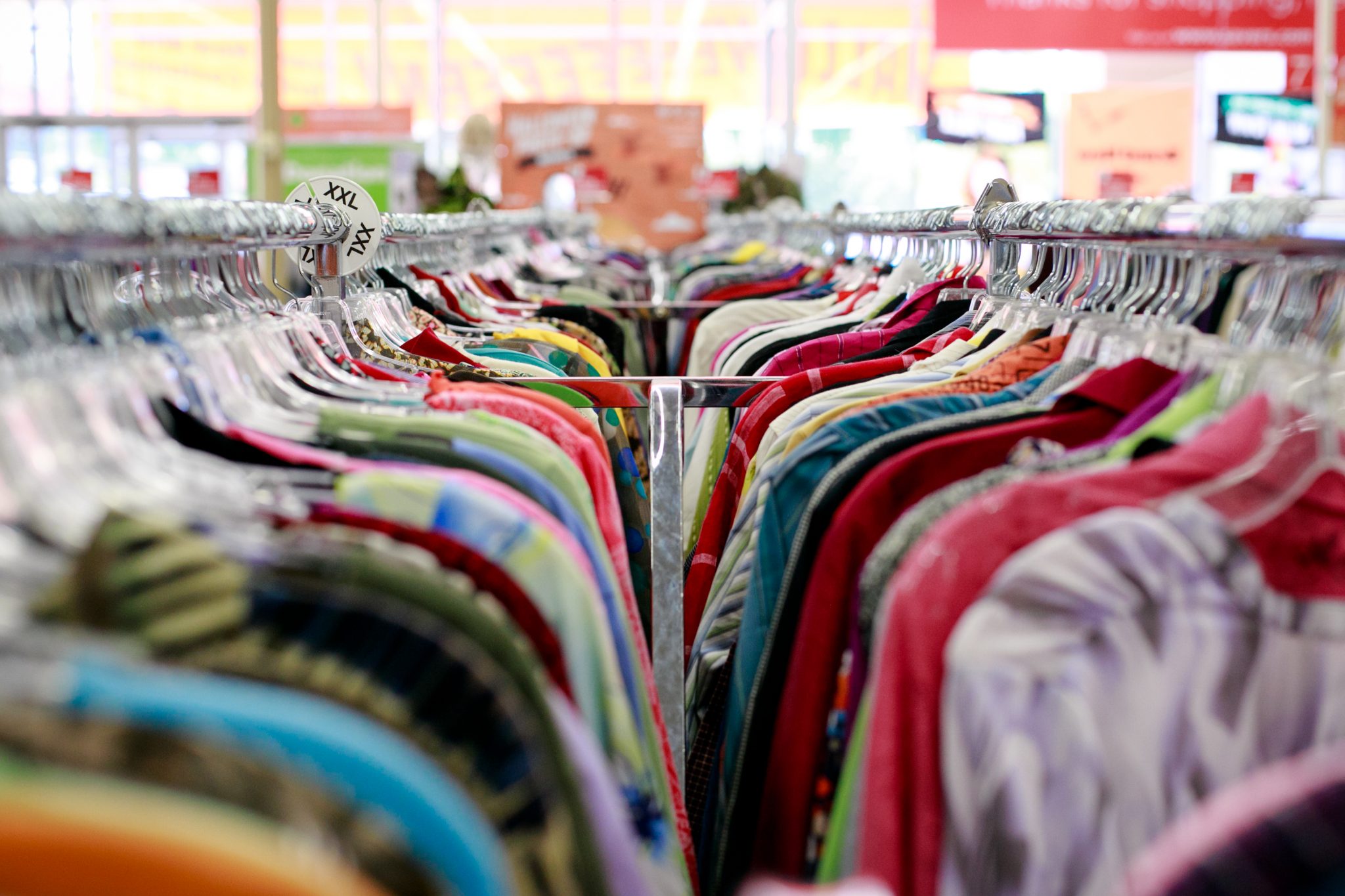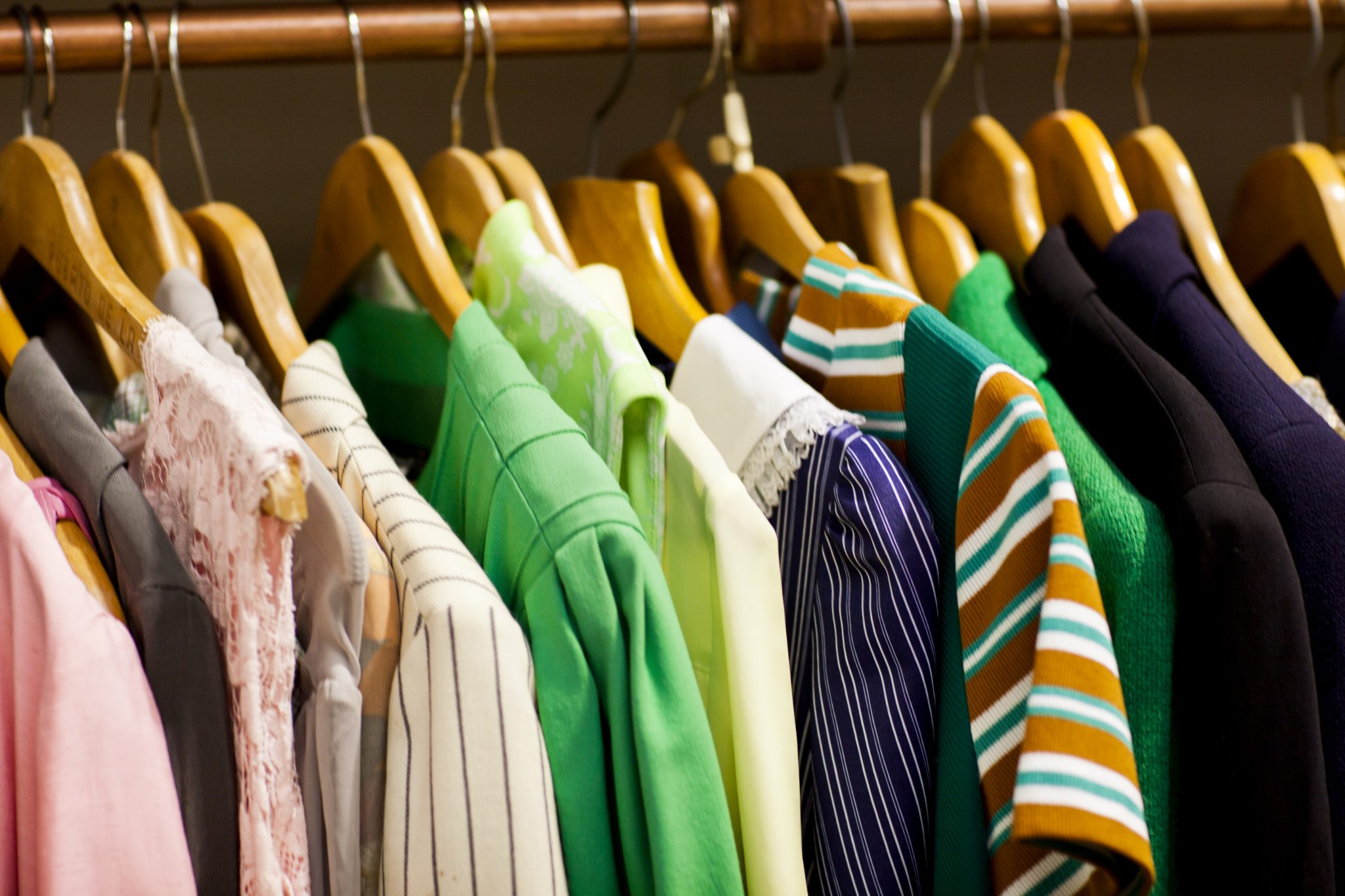and
It’s Secondhand September once more, which champions a more sustainable way of shopping. Author and charity shop expert Rosalind Jana, alongside a host of Stylist’s favourite secondhand influencers, shares their advice on finding and styling those hidden gems.
I’ve always loved charity shops, inheriting from my mum a constantly twitching antennae for any Oxfam, Cancer Research, Mind or Shelter in the vicinity.
Now in my 20s, perhaps a good 75% of my wardrobe has been sourced in charity shops. From pink leather skirts to well-tailored blazers to beautifully patterned Seventies cotton sundresses, there’s no end to the gems I’ve acquired over the years. There’s a very particular thrill to the process. One in which the pleasure comes in the act of seeking and sifting, of nosing out the unexpected and taking chances.
Unlike the high street, there’s nothing predictable about a charity shop. The contents might be terribly dull or disappointing – and there are plenty of times I’ve left again empty-handed – but there’s always the possibility of discovering treasure.
It’s an experience that Cornwall-based Lally MacBeth, 28, describes as magic. “Their capacity to offer anything from a Victorian nightdress to a full set of craft magazines from the Seventies never ceases to fill me with joy and zest for life,” she says. “If I’m ever feeling a little lacklustre an hour in a charity shop will set my mind whirring with a million and one new ideas for projects.” Alongside the obvious advantages when it comes to affordability and fresh additions to one’s wardrobe and home, there’s so much imaginative and creative potential to be found.
So, this Secondhand September, here are some top tips for finding (and styling) your thrifted wares.
Head outside the cities
Cities are obviously fantastic. Whether you’re in Edinburgh or Bristol, there are choice gluts of charity shops to be found. But it’s worth looking elsewhere too. In fact, as much as I can extoll the virtues of finding a pair of very long, pristine Dolce & Gabbana trousers for £40 at the Mary’s Living & Giving in Highgate (and it is true that charity shops in affluent areas will accumulate a lot of designer cast-offs – but those running them know that, and the prices will reflect it), plenty of the best bargains are to be found in less urban areas. I grew up in the middle of the countryside, nosing out Seventies skirts and tottering suede heels in small market towns where the prices were much lower, fewer people were vying for the same things, and older populations led to both more vintage donations and, sometimes, less awareness of what was H&M and what was Hermes.
Tam Hoang @therapythrift
“It’s easy to be swayed by the cheap prices when thrifting, but it pays off to be patient and picky,” says Hoang. “Ask yourself: “Does this suit my lifestyle?” “How many different ways can I wear this, and will it work across multiple seasons?” “Does it fit, and does it fit well?” and “Do I actually like this, or do I like it because it’s trendy?”
Learn what you’re looking at
There are all sorts of tips and tricks for assessing what’s on a rail at a glance, and knowing how to identify high quality fabrics is an excellent place to start. Being able to sort your silks from your polyesters and your wools from your acrylics will allow you to leap straight towards the good stuff. Keeping an eye out for particular labels – my personal favourite being St Michael, aka retro M&S – helps too. I’ve also been known to whip my phone out to Google various unfamiliar but intriguing labels – which is how I now know that my favourite, rather ridiculous root vegetable patterned trousers were a sample from a defunct independent menswear designer. Oh, and if you’re a vintage lover, some knowledge of different decade’s silhouettes and details (for example – a metal zip might suggest a garment was made pre-1960) will arm you further in your searching too.
Becky Hughes @beckymaryhughes
“Don’t be afraid to mix newer styles with old,” advises Hughes. “I recently wore a thrifted but new Topshop tight bodice with a vintage yellow plaid skirt for Reading festival, paired with my secondhand Dr Martens. The mix of new and old made it authentic but also kept it playful and original.”
Hughes also suggests playing around with colour, and getting experiential. “A lot of charity shops can be colour-coded which helps,” she says.“A turquoise blue and a teal Green are a great match at the moment and a way of keeping your outfits fresh. Put a belt up on your top to add an extra ‘edge’ to your look, add a colourful vintage scarf to your favourite thrifted bag, use a pair of tights as a layered top underneath your looks. It’s always fun to think outside the box and create memorable fits!”
Assess carefully
After all of the above, do some practical checks too. Don’t be afraid to give the clothes a good sniff, and look for any stains and fades – especially under armpits and around necklines. Sometimes these can be washed out, but be realistic. A white cotton sundress with yellowing patches is probably irredeemable. And on that note, as tempting as it might be to pick something up and think “oh this’ll be perfect once I repair that rip / take up the hem / alter this in some way”, only proceed if you’re the kind of person who actually gets out needle and thread or a sewing machine on a regular basis. Otherwise, like me, you’ll end with a vaguely shameful pile you’ve been meaning to sort for years.
Sophie Abdullahi @sophievssophie
“Shopping second hand can take up time,” Abdullahi tells Stylist, “so if I can’t head into shops,I tend to use apps like Vinted when I want to buy secondhand clothes that are also affordable.”
Keep an open mind
Use charity shops as a space to experiment with your style and tastes. Try on things you normally wouldn’t. See whether you were always meant to be someone who swished around in a long coat or wore Eighties velvet mini-dresses. Look in all parts of the shop (as someone with size eight feet, I always head straight to the men’s shoes section in search of brogues and boots). Have fun. Enjoy theperusing.
Annyah James @annyahdeanna
“Ignore sizes and try items on if you can,” James says. “When shopping secondhand, you can come across really cool items that may have a size on it that isn’t what you would consider your own, but honestly sometimes items labeled a 12 and fit like an 8. It’s always good to try items on if changing rooms are available and even if they aren’t, a little bonus tip is to wear clothes that are easy to take off /put things over when shopping in person. “
“When shopping online, I suggest getting a tape measure and knowing your measurements. You can always check with sellers to see if an item fits your measurements so you don’t run the risk of getting something that doesn’t fit.”
Go independent
Alongside the many chains of charity shops that exist nationwide, it’s worth visiting those devoted to local causes and communities – it could be a one-off, or a location-specific handful. Whether it’s London’s Second Chance (which gives to a variety of national and international charities, as well as those local to Archway), Kent’s branches of Hospice in the Weald, Staffordshire’s Newlife Stores, or Penryn’s Retro Chic Warehouse (with profits going to Cornwall Hospice Care), these shops often provide particularly enticing stock – often because they put out much of what’s directly donated to them.
Images: Getty/courtesy of individuals
Source: Read Full Article

